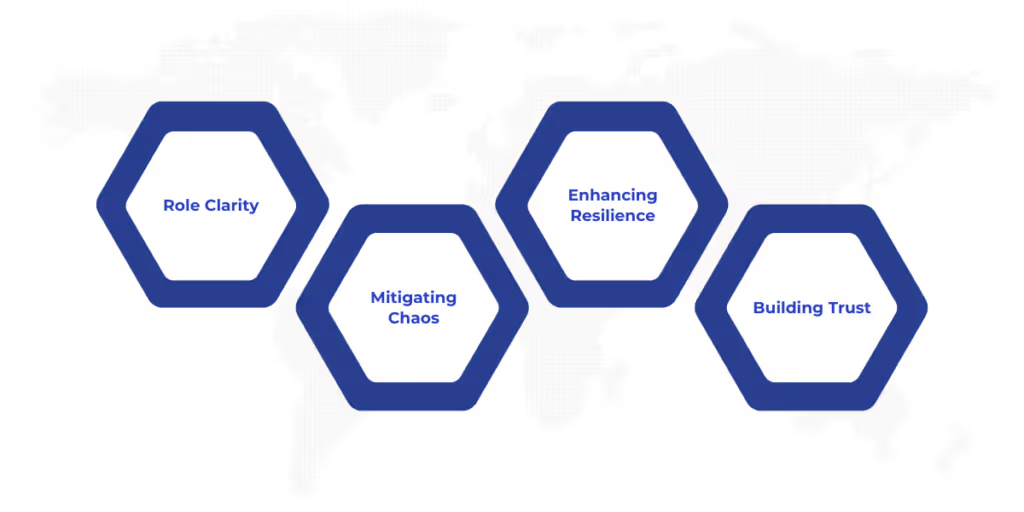

Effective incident management is crucial in today’s digital environment, where cybersecurity threats are constant and evolving. Having a robust incident response strategy helps organizations manage unexpected events efficiently and minimize damage. A well-structured response can make all the difference in mitigating chaos, reducing delays, and fostering confidence in the response team. Additionally, prompt communication with stakeholders enhances trust and ensures the organization's resilience.
Organizations can react more effectively by maintaining a solid response strategy, build a proactive security posture, and improve their overall recovery process.

Classifying incidents based on their severity helps prioritize resources and manage incidents according to their potential impact on the organization. The severity of an incident dictates the urgency and type of response required, ensuring the right level of action is taken. Understanding the classification system allows teams to allocate resources efficiently and deal with each incident appropriately.
A strong, well-defined response process is necessary for managing incidents efficiently. Best practices ensure that the team can respond quickly to critical issues, document their actions for future reference, and handle minor problems without excessive delays. Following these best practices ensures an effective, organized response, minimizing damage, and restoring normal operations quickly.
Incident management tools play a crucial role in streamlining the process of responding to and resolving incidents. These tools are designed to improve communication, collaboration, and task tracking, ensuring the response is efficient. They also provide real-time visibility and help teams address incidents faster.
Incident management tools provide a single platform for communication, ensuring all team members are on the same page. This eliminates confusion and allows for smoother coordination during incidents.
With tools that offer dashboards and alerts, teams can monitor incidents as they unfold, ensuring nothing is overlooked. Real-time updates also help prioritize tasks based on urgency.
Incident management tools often feature built-in analytics that help teams learn from past incidents. By analyzing incident patterns, teams can adjust their strategies and prevent future occurrences.
Instant updates provided by these tools help reduce delays, ensuring that the team can take action as quickly as possible.
Using the right incident management tools offers numerous benefits, ranging from improved team efficiency to enhanced communication and reduced response times. These tools provide the visibility and structure necessary to resolve incidents quickly and effectively.
By automating task assignment and reminders, these tools allow teams to focus on resolution, increasing productivity.
With a centralized platform for incident communication, the team can avoid misunderstandings and ensure all parties are kept informed.
Tools provide valuable insights from past incidents, helping teams prepare for future incidents and avoid common pitfalls.
Designing an effective incident response strategy involves setting up processes and tools that streamline workflows, improve response times, and ensure the system can scale. Integrating the right tools and practices into the strategy will help teams manage incidents more effectively.
Automating tasks ensures that no actions are missed and helps improve the efficiency of response efforts.
By integrating incident management tools with existing security systems, businesses can improve workflow efficiency and ensure real-time data sharing.
Tools with real-time visibility allow teams to assess the current situation quickly, ensuring the right resources are deployed to the incident.
Incident response drills are essential to ensure that teams are prepared for real-world scenarios. These drills simulate security breaches and allow teams to practice their response protocols. Regular drills ensure that everyone knows their role, and that the organization’s incident response strategy is effective.
Incident management is critical for any organization’s cybersecurity strategy. By implementing best practices, utilizing effective tools, and continuously improving incident response protocols, businesses can enhance their ability to respond quickly and minimize the impact of incidents.
WaferWire is ready to help you optimize your incident management processes. Our expert team can guide you through implementing effective response strategies and the latest incident management tools to ensure your organization is prepared for any cyber threat.

